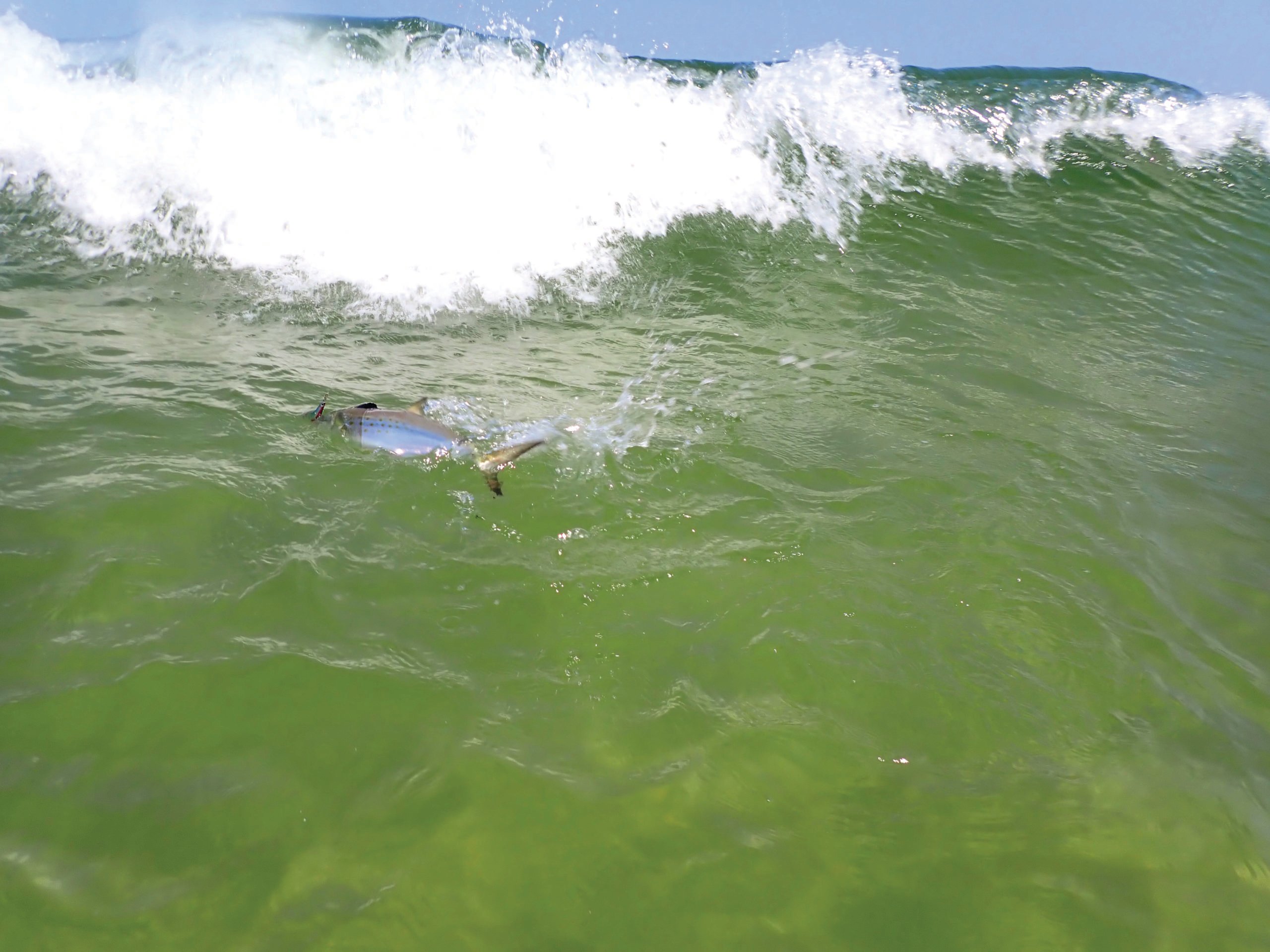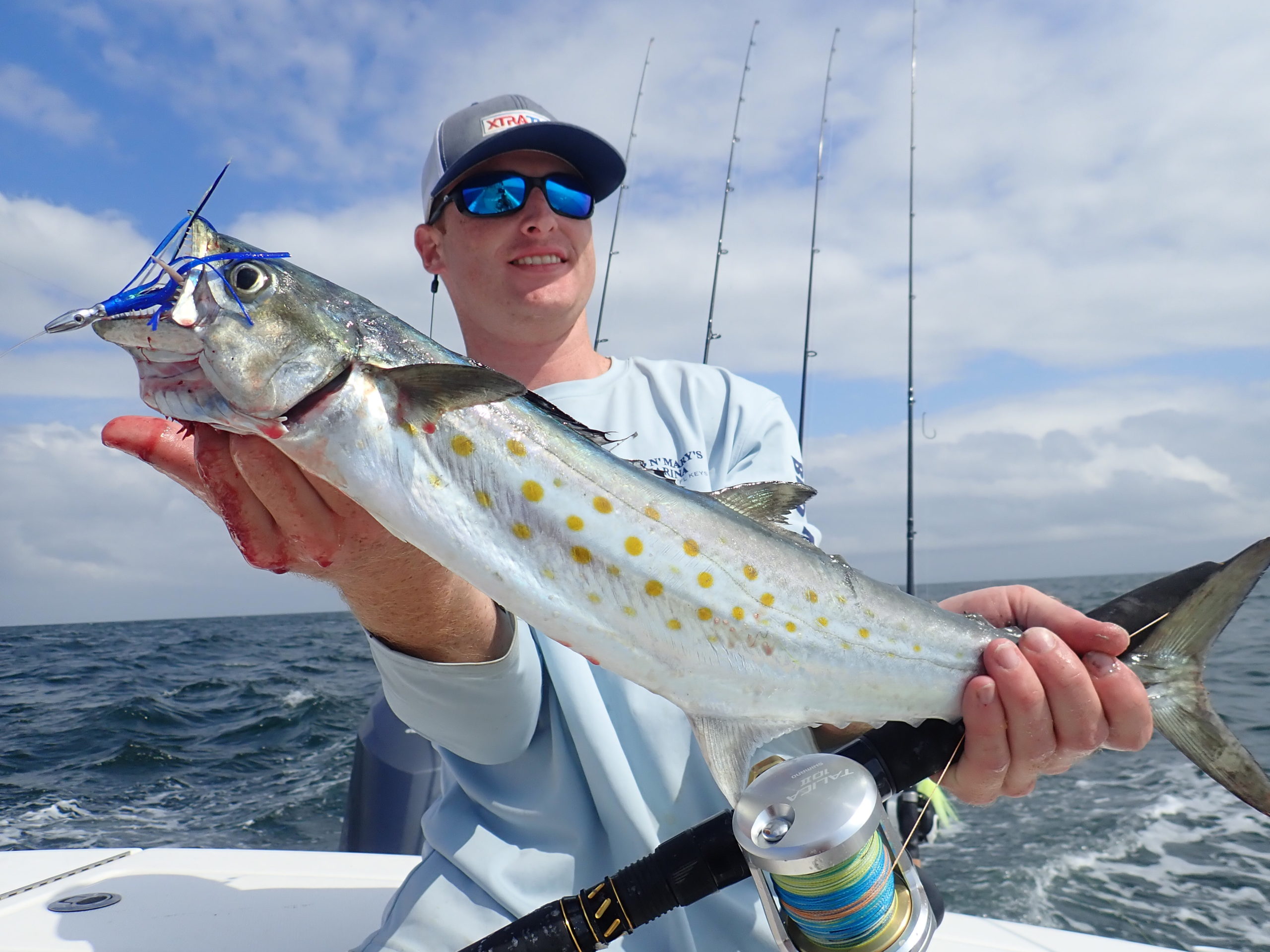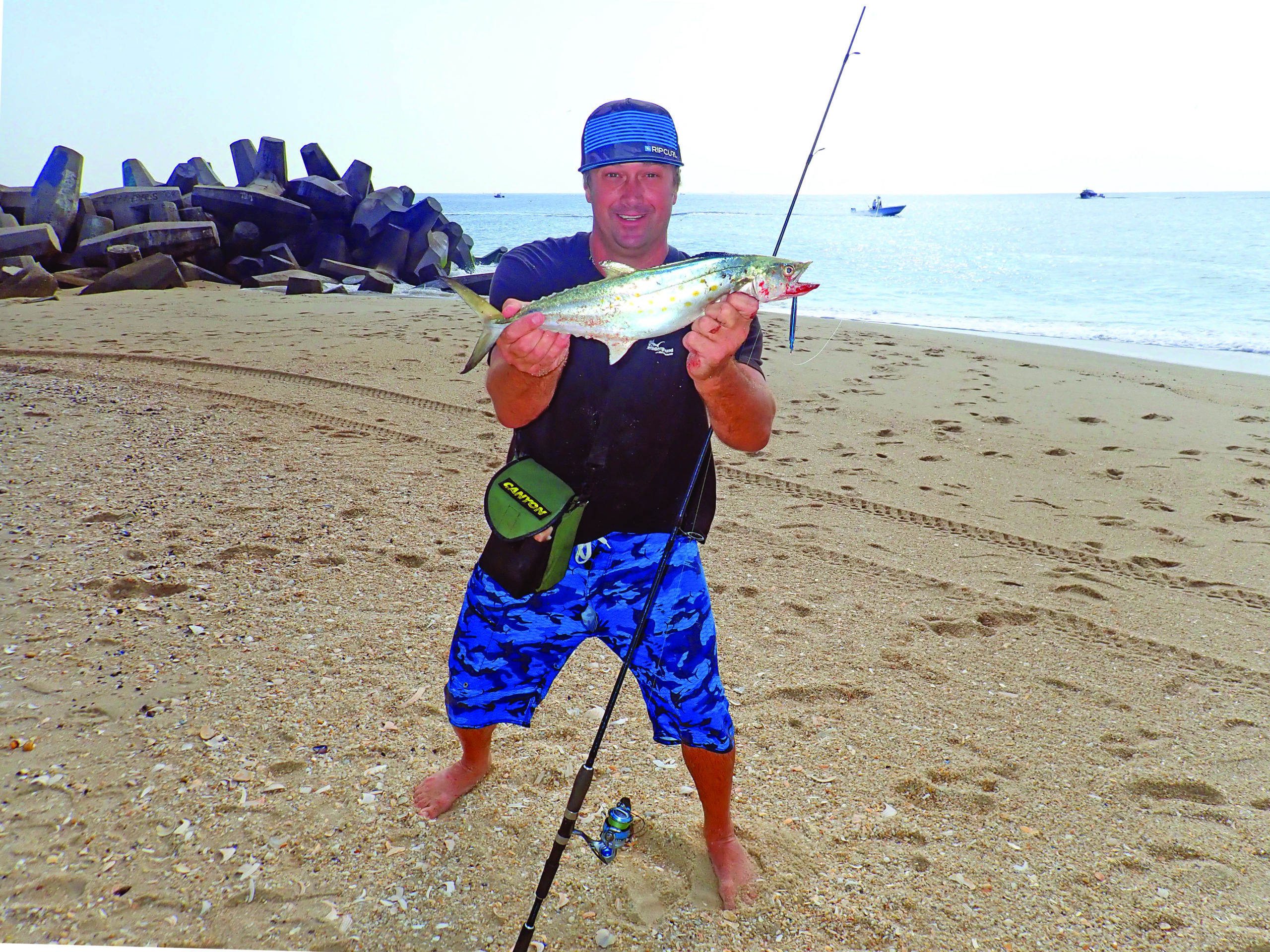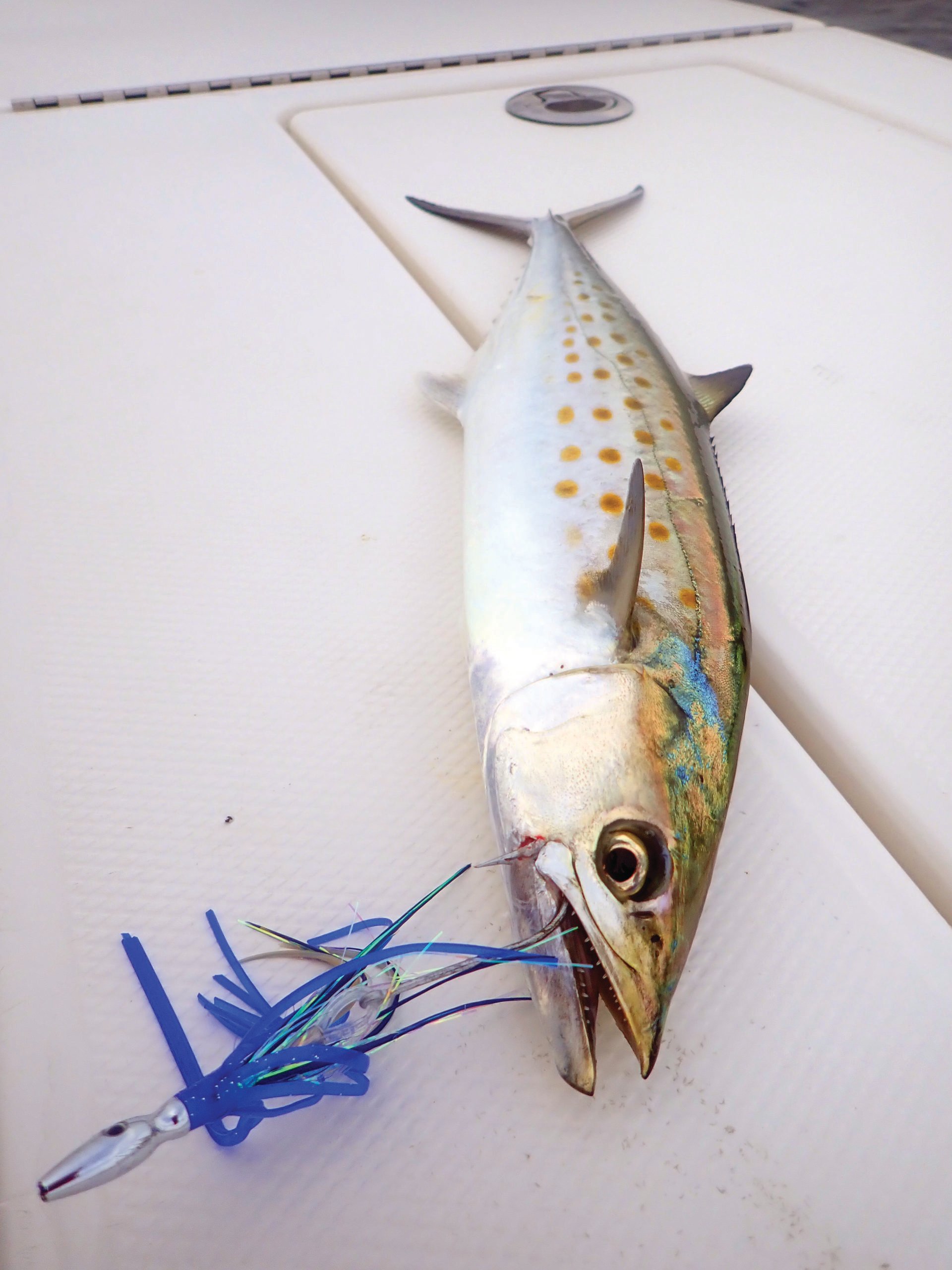
Ever wonder how to target Spanish mackerel effectively by boat or by beach? Here’s how.
I never thought I would state these word but let’s call it like it is – Spanish mackerel are now a staple species providing a reliable fishery in New Jersey.
That statement is pretty incredible as I cannot remember a time in the past when Spanish were thick enough to make daily trips targeting them. One here and one there was the usual norm on occasional years, but summertime offers up shots at Spanish day in and day out. From the shoreline to the potlines, here are a few ways to target the speed demons.
A SHORE THING
Spanish mackerel move in thick during July and August when the water temps are running between 72 to 80 degrees. Visual cues are the number one way to spy Spanish in the surfline as they will blow up rainbait schools right in the undertow and between the sand bars. Also look for terns dipping down to spear the rainbait being pushed up from below by Spanish macks. Last year I can remember a day in Lavallette where schools of literally hundreds of Spanish macks stayed on a huge rainfish bait ball for hours as I picked away at them, landing 26 macks in an hour and half.
While blindcasting works fine, Spanish can be seen vaulting clear out of the water. My surfcasting pursuits for Spanish starts with a 7- to 8-foot medium action rod with a moderate to fast action, matched with a Shimano 5000 Stradic reel, spooled with 30-pound braided Power Pro line. For leader, via uni to uni knot tie a 48-inch section of 25-pound fluorocarbon leader to the braid running line, maybe up to 30-pound for Spanish as they have serrated teeth that can quickly cut line if they inhale the front of the jig. Drags should be set light as their ripping runs will snap lines if buckled down too tight.
Lures are metals like 1.4-ounce Williamson Gomoku jigs, Deadly Dick #4, and Hogy Epoxy jigs. Rip them back as fast as you can. A huge concentration of Spanish seems to gravitate to the area from Manasquan Inlet to Barnegat Inlet, as well as off the 8th street Jetty near Townsend’s Inlet. I always tie the lure direct to begin with, then if I hook enough fish to feel confident they are on a hot bite and not looking too scrutinizing for the leader, I’ll tie a small 50-pound TA Power Clip or 30-pound duolock snap clip so I can interchange lures with expediency.
The finest time to find Spanish is right at sunup until about 9:30 a.m., though when the feed is hot and heavy, you can find them zipping through the surf throughout the day.

PATROL & TROLL
Spanish mackerel patrol the nearshore waters outside of the surfline, corralling the rainfish and spearing schools anywhere from 1 to 5 miles. A quick and easy approach is a few hour day troll to get you out and back in time for work, or you can play around with the Spanish schools all day long. Look for visuals of macks vaulting out of the water, or watch for thin bait schools spraying out the water.
Trolling with a four-rod spread is easy and manageable. Go with 7-foot conventional rods rated for 20- to 40-pound matched with Shimano Torium 16 reel, spooled with 50-pound braided line and a Sampo Coastlock swivel tied via offshore knot. For trolling options, you can interchange many lures onto the swivel to test run. My go to offerings are Williamson flash feathers, size 00 Clark spoons, rigged squid skirts, and even Ava 17 to 47 jigs with no tails. Set the spread out in a basic two-deep, two-in-close pattern, and simply run at a faster 6- to 8-knot pace as Spanish love the thrill of the chase with fast moving presentations.
Hits come fast, so be sure the drags aren’t set too tight as to have their speedy runs pull the hooks, but put a moderate drag on the reel to allow them to zip off some line, you can adjust the drag down a notch after the initial run. Work your trolling patterns around the lobster pots on the inshore reef sites as the schools will hang around picking off the baitfish that congregate around the potlines for protection. The Axel Carlson Reef, Barnegat Light Reef, Manasquan Ridge and Barnegat Ridge are all hot spots to find Spanish.

DIG THE JIG
When you witness Spanish crashing bait schools or are marking the on the fishfinder, another option is to drop down and jig for some rip-roaring hits. Last year, I did just that with Jim Louro, rep for A Band of Anglers, as we marked some smaller red splotches on the screen. With some Dartspins dropped down to the marked level we began twitching the lures to get smoked by the Spaniards. Louro even was pleasantly surprised when he hooked a king mackerel within the mix of macks which was surprising as we were at the Manasquan Ridge only 5 miles off. I opted to drop Williamson Gomoku jigs, Savage Gear Glass Minnows and 4-inch RonZ soft baits to get stroked by Spanish up to 3 pounds.
Jigging can be done be either dropping down and reeling up with a speed retrieve, or by swooping the rod up and down to allow the jig to dart and flutter. Equip with heavier 30-pound Seaguar fluorocarbon leader as the teeth of the Spanish can easily hit the line instead of the lure during a jerky presentation and cut the leader if it’s too light. A heavier leader will at least allow you to land the one fish with some abrasion and you can always switch out the next clean leader. Look to jig macks outside of inlet areas on outgoing tides as Spanish macks await the outflow to flush baitfish out.
The summertime scene has changed. Spanish mackerel now offer the July surfcaster some drag-ripping fun to start the day as well as bringing boaters all day action chasing fast schools inshore to troll, jig or cast to. With a 14-inch minimum size and 10 fish bag limit, Spanish are unmatched in the frying pan for taste with their succulent, white flaky meat.
Follow these Spanish lessons to come tight this month and hopefully – if recent history repeats – through the rest of your Jersey Shore summer.




